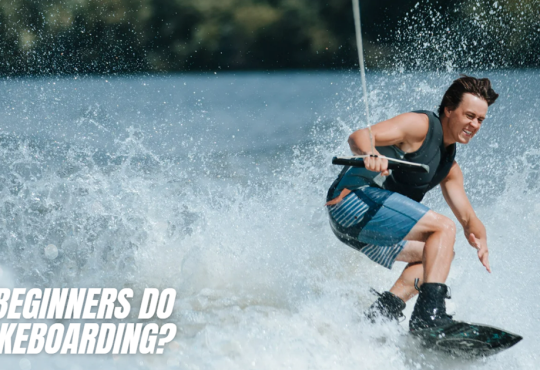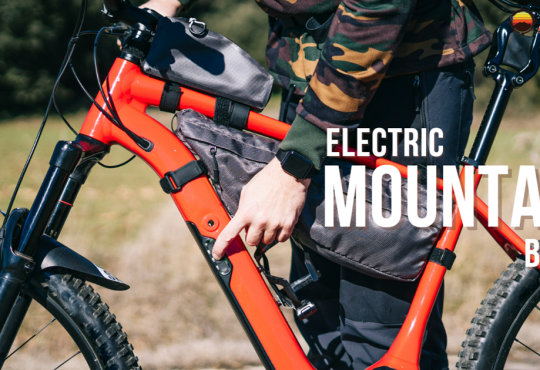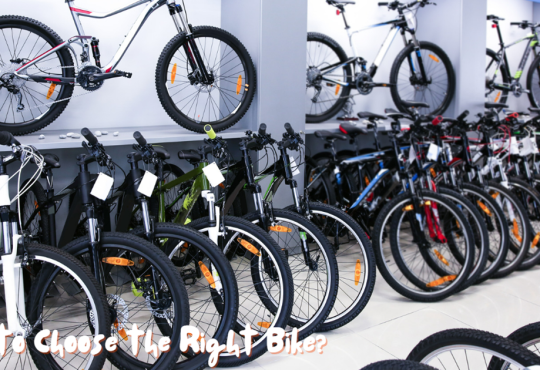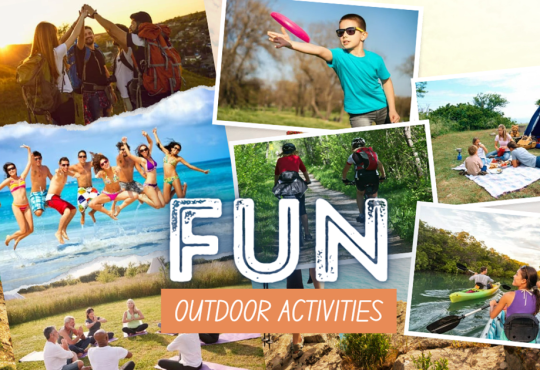When you think about to start cycling, it can be both exhilarating and daunting, especially for beginners. Whether you’re eager to explore new exercise avenues, reduce your carbon footprint, or simply relish the joy of gliding through the open air, cycling offers a myriad of benefits. But before you step onto that saddle and pedal away, it’s crucial to equip yourself with the necessary knowledge and preparations. This comprehensive beginner’s guide to cycling is tailored to newcomers, offering invaluable insights into what you need to know before venturing into the world of cycling as part of your exercise routine.
The 5 Beginner’s Guide to Cycling
Choosing the Right Bike:
Determine Your Cycling Goals: Before making any decisions, it’s crucial to understand why you’re taking up cycling. If your aim is primarily fitness-oriented, you might prioritize features like lightweight frames and efficient gearing systems. On the other hand, if you plan to use your bike for commuting, consider factors such as comfort, durability, and the ability to attach racks or panniers for carrying belongings. For leisure cyclists, versatility and comfort may be key, allowing for relaxed rides on various terrains.
Research Bike Types: There’s a wide array of bike types available, each designed for specific purposes:
- Road Bikes: Ideal for speed and efficiency on paved roads, featuring lightweight frames, narrow tires, and drop handlebars for an aerodynamic riding position.
- Mountain Bikes: Built to tackle off-road trails with rugged frames, knobby tires, suspension systems, and wide handlebars for better control.
- Hybrids: Versatile bikes that blend features of road and mountain bikes, suitable for casual riding, commuting, or light off-road excursions.
Visit a Local Bike Shop: While online research can provide valuable insights, nothing beats the hands-on experience of visiting a local bike shop. Knowledgeable staff can assess your needs and recommend suitable options based on your budget and preferences. Take advantage of test rides to get a feel for different bike models and ensure a comfortable fit.
Consider Essential Features: When selecting a bike, pay close attention to the following features:
- Frame Size: Proper bike fit is essential for comfort and efficiency. Consider factors such as standover height, reach, and stack to ensure the right fit for your body proportions.
- Handlebar Style: Different handlebar styles offer varying riding positions and control. Choose a style that suits your comfort preferences and riding style, whether it’s flat bars for an upright position or drop bars for a more aerodynamic stance.
- Gear Options: The number of gears and gear range can impact your ability to tackle different terrains. Consider your local terrain and fitness level when choosing gear options.
- Suspension: Suspension systems, commonly found on mountain bikes, absorb shocks and vibrations for a smoother ride on rough terrain. Decide whether front suspension (hardtail) or full suspension is necessary based on your riding preferences and intended terrain.
By carefully considering these factors, you’ll be well-equipped to select a bike that aligns with your goals, preferences, and riding style.
This detailed approach ensures that you make an informed decision when choosing your first (or next) bike, setting the stage for a rewarding cycling experience.
Essential gear and equipment:
Helmet: Your helmet is arguably the most critical piece of cycling gear, serving as your first line of defense against head injuries. When selecting a helmet, prioritize safety features such as impact-absorbing foam, adjustable straps for a snug fit, and ventilation to keep you cool during rides. Look for helmets that meet safety standards such as CPSC (Consumer Product Safety Commission) or EN1078 (European Standard). Investing in a quality helmet is paramount for your safety on the road or trail.
Appropriate Clothing: Comfortable and functional clothing is essential for an enjoyable cycling experience. Opt for moisture-wicking fabrics that draw sweat away from your skin, keeping you dry and comfortable during rides. Consider padded cycling shorts for added comfort on longer rides, and layer clothing to accommodate changing weather conditions. Bright or reflective colors enhance visibility to motorists, while lightweight and breathable materials ensure comfort, even on hot days.
Bike Lock: Protect your investment by securing your bike with a reliable lock when not in use. Choose a lock that’s sturdy and durable, preferably made of hardened steel, and consider additional security features such as a cable or chain for securing wheels and accessories. Remember to lock your bike to a fixed object in a well-lit area to deter theft and ensure peace of mind when leaving your bike unattended.
Lights and Reflectors: Visibility is crucial for safe cycling, especially during low-light conditions or night rides. Equip your bike with front and rear lights to enhance visibility to motorists and pedestrians. Choose lights with multiple brightness settings and long battery life for extended rides. Additionally, attach reflectors to your bike frame, wheels, and pedals to increase visibility from all angles. Bright, flashing lights and reflective materials significantly reduce the risk of accidents by making you more noticeable to others on the road.
Repair Kit: A well-equipped repair kit ensures you’re prepared for unexpected mechanical issues during rides. Essential items include basic tools such as tire levers, a multi-tool with screwdrivers and wrenches, spare inner tubes compatible with your bike’s tire size, a portable tire pump or CO2 inflator for reinflating tires, and patches for repairing punctures. Familiarize yourself with basic bike maintenance tasks, such as fixing a flat tire or adjusting brakes and gears, to handle minor repairs on the go and keep your ride smooth and uninterrupted.
By prioritizing these essential gear and equipment items, you’ll enhance your safety, comfort, and enjoyment while cycling, allowing you to focus on the thrill of the ride.
Safety First:
Learn the Rules of the Road: Familiarizing yourself with traffic laws and cycling regulations is essential for safe and legal cycling. Review local laws governing cyclists’ rights and responsibilities, including rules for sharing the road with motorists and pedestrians. Understand traffic signals, signs, and road markings applicable to cyclists, and adhere to speed limits and right-of-way rules. Taking a cycling safety course or consulting resources provided by local cycling organizations can deepen your understanding of road etiquette and enhance your confidence as a cyclist.
Practice Defensive Riding: Defensive riding involves anticipating potential hazards and proactively taking measures to avoid accidents. Maintain situational awareness by scanning your surroundings for potential dangers, including parked cars, opening car doors, pedestrians, and other cyclists. Keep a safe distance from vehicles, especially large trucks and buses, and avoid riding in blind spots. Anticipate motorists’ actions by predicting their movements and adjusting your position accordingly. Prioritize safety over speed, and always be prepared to react quickly to unexpected situations on the road.
Signal Your Intentions: Clear communication with motorists and fellow cyclists is essential for safe and coordinated movement on the road. Use hand signals to indicate your intentions, such as signaling turns, stops, or changes in direction. Extend your left arm straight out to signal a left turn, bend your left arm downward at a 90-degree angle to signal a right turn, and extend your left arm upward at a 90-degree angle to indicate stopping or slowing down. Make eye contact with drivers to ensure they acknowledge your presence and intentions before proceeding.
Stay Visible: Enhancing your visibility to others on the road is crucial for reducing the risk of accidents, especially during low-light conditions or inclement weather. Wear brightly colored or reflective clothing to make yourself more conspicuous to motorists and pedestrians. Equip your bike with front and rear lights, as well as reflective accessories such as tape or stickers, to increase visibility from all angles. Consider additional safety measures, such as installing a flag or reflective flagpole, to make your presence known, particularly in busy or high-traffic areas.
Always Wear Your Helmet: Your helmet is your most valuable piece of safety equipment, offering crucial protection for your head in the event of a fall or collision. Ensure your helmet fits snugly and sits level on your head, covering your forehead without obstructing your vision. Fasten the chin strap securely to prevent the helmet from shifting or coming off during a crash. Inspect your helmet regularly for signs of wear or damage, and replace it if it sustains a significant impact or shows signs of deterioration. Remember, wearing a helmet significantly reduces the risk of head injury and can save your life in the event of an accident.
Prioritizing safety while cycling not only protects you from harm but also fosters a culture of mutual respect and responsibility among all road users. By following these safety guidelines, you’ll enjoy a safer and more enjoyable cycling experience, whether you’re commuting, exercising, or exploring new routes.
Building Endurance and Strength:
Start Slowly: When beginning your cycling journey, it’s essential to start at a comfortable pace and gradually increase your distance and intensity over time. Begin with shorter rides at a relaxed pace to allow your body to adapt to the demands of cycling. As you build confidence and stamina, gradually extend the duration of your rides and incorporate gentle inclines to challenge your muscles and cardiovascular system. Listen to your body and avoid pushing yourself too hard, especially in the initial stages of your training.
Incorporate Interval Training: Interval training is a highly effective method for improving cardiovascular fitness and building endurance. Alternate between periods of high-intensity effort, such as sprinting or climbing hills, and recovery intervals of lower intensity or rest. This cycling technique not only boosts your aerobic capacity but also enhances your body’s ability to tolerate and recover from intense exercise. Experiment with different interval lengths and intensities to find a training regimen that suits your fitness level and goals.
Focus on Proper Form: Maintaining proper riding form is crucial for maximizing efficiency, preventing injury, and optimizing performance. Pay attention to your posture and alignment while cycling, keeping your back straight, shoulders relaxed, and elbows slightly bent. Distribute your weight evenly between the saddle and handlebars, and engage your core muscles to stabilize your body. Avoid excessive tension in your neck, arms, or shoulders, as this can lead to fatigue and discomfort during longer rides. Practice smooth, fluid pedal strokes to minimize strain on your joints and maximize power transfer to the pedals.
Cross-Train: Supplementing your cycling routine with other forms of exercise can enhance overall fitness and prevent overuse injuries. Incorporate strength training exercises, such as squats, lunges, and leg presses, to build muscle strength and improve pedal power. Yoga or Pilates sessions can help improve flexibility, balance, and core stability, enhancing your performance and reducing the risk of injuries on the bike. Additionally, activities like swimming or running provide excellent cardiovascular conditioning and can complement your cycling workouts while adding variety to your fitness regimen.
By incorporating these strategies into your training routine, you’ll gradually build endurance, strength, and confidence as a cyclist. Remember to listen to your body, prioritize rest and recovery, and enjoy the journey as you progress toward your fitness goals.
Nutrition and Hydration:
Fuel Your Rides: Maintaining a balanced diet is crucial for fueling your rides and supporting endurance. Prioritize carbohydrates as your primary source of energy, as they provide readily available fuel for your muscles during exercise. Incorporate complex carbohydrates from sources such as whole grains, fruits, vegetables, and legumes to sustain energy levels throughout your rides. Additionally, include lean proteins to support muscle repair and growth, and healthy fats for sustained energy and satiety. Aim for a well-rounded diet that includes a variety of nutrient-dense foods to meet your energy and nutritional needs as a cyclist.
Hydrate Adequately: Proper hydration is essential for optimal performance and overall health while cycling. Begin hydrating well before your ride by drinking water or a sports drink to ensure you start in a well-hydrated state. During your ride, aim to drink fluids regularly, even if you don’t feel thirsty, to replace fluids lost through sweat and maintain hydration levels. In hot or humid conditions, increase your fluid intake accordingly to prevent dehydration and minimize the risk of heat-related illnesses. After your ride, continue to hydrate with water or electrolyte-rich beverages to replenish fluids and facilitate recovery.
Pack Snacks: Longer rides require additional fuel to sustain energy levels and prevent fatigue. Pack portable snacks that are easy to eat on the go and provide a combination of carbohydrates, protein, and healthy fats to fuel your rides effectively. Energy bars, gels, or chews offer convenient sources of quick-digesting carbohydrates for immediate energy. Fresh fruits, such as bananas or oranges, provide natural sugars and electrolytes to replenish energy stores and support hydration. Nuts and seeds offer protein and healthy fats to keep you feeling satisfied and maintain steady energy levels throughout your ride. Experiment with different snack options to find what works best for you and your nutritional needs during cycling.
By prioritizing proper nutrition and hydration, you’ll optimize your performance, enhance endurance, and enjoy more comfortable and enjoyable rides. Remember to listen to your body’s cues, adjust your fueling and hydration strategies accordingly, and fuel your rides for success.
It’s a lifestyle that fosters camaraderie, exploration, and personal growth
Cycling is not just about taking up a new hobby; it’s stepping into a world of endless possibilities and discoveries. As you pedal along, you’re not only improving your physical health but also opening doors to new adventures and experiences.
By following the insights shared in this comprehensive guide, you’re not just preparing for a ride; you’re equipping yourself with the knowledge and tools to embark on a fulfilling journey. From choosing the right bike to mastering safety techniques and nourishing your body, every step you take brings you closer to a healthier, happier you.
Cycling is more than just a mode of transportation or a way to stay fit – it’s a lifestyle. It’s about embracing the freedom of the open road, connecting with nature, and building lasting friendships with fellow cyclists. So, as you saddle up and feel the wind against your face, remember that you’re not just cycling; you’re embracing a lifestyle of camaraderie, exploration, and personal growth.
So, whether you’re hitting the urban streets or venturing into the wilderness, remember to embrace the journey, enjoy the ride, and pedal towards a brighter, healthier future.





